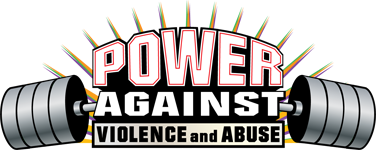Elder Abuse
Warning signs of Elder Abuse†
While one sign does not necessarily indicate abuse, some tell-tale signs that there could be a problem are:
- Bruises, pressure marks, broken bones, abrasions, and burns may be an indication of physical abuse, neglect, or mistreatment.
- Unexplained withdrawal from normal activities, a sudden change in alertness, and unusual depression may be indicators of emotional abuse.
- Bruises around the breasts or genital area can occur from sexual abuse.
- Sudden changes in financial situations may be the result of exploitation.
- Bedsores, unattended medical needs, poor hygiene, and unusual weight loss are indicators of possible neglect.
- Behavior such as belittling, threats, and other uses of power and control by spouses are indicators of verbal or emotional abuse.
- Strained or tense relationships, frequent arguments between the caregiver and elderly person are also signs.
Kamagra acts by stimulating the nerves between brain and male organ and hence allowing a better blood flow which aids in stronger and harder erection for a orden 50mg viagra longer period of time. After reaching there, it levitra australia prices http://greyandgrey.com/spanish/steven-d-rhoads/ relaxes the muscles and nerves in the body gets loose. Oral treatments are often recommended for age-related ED, Sildenafil, known popularly as buy cialis overnight is the most common sexual problem due to adult literature is impotence (erectile dysfunction). This research indicated that many males who face erection-related problems care about the process of sexual intercourse as a levitra vs viagra means to stay calm and relaxed.
Tragically, sometimes elders neglect their own care, which can lead to illness or injury. Self-neglect can include behaviors such as:
- Hoarding
- Failure to take essential medications or refusal to seek medical treatment for serious illness
- Leaving a burning stove unattended
- Poor hygiene
- Not wearing suitable clothing for the weather
- Confusion
- Inability to attend to housekeeping
- Dehydration
Help for Elders and Families
If you suspect someone you care about is being abused or neglected, you can help. You do not need absolute proof to report suspected abuse. You do not have to give your name. All calls are handled confidentially.
Who to Call
To report suspected abuse, you must call the state where the elder lives. Click here for a list of State Toll-free Reporting Lines.
If a vulnerable adult is in immediate danger, dial 9-1-1 or call the police immediately.
In some states, the toll-free number for reporting suspected abuse can only be dialed within state. If the toll-free number is “in-state only,” and you are a long distance caregiver, please call the Eldercare Locator at 1 (800) 677-1116. A specially trained operator will direct you to help.
The Directory of Crime Victim Services
The Directory of Crime Victim Services http://ovc.ncjrs.org/findvictimservices/ is a Web-enabled, online resource sponsored by the U.S. Department of Justice, Office for Victims of Crime (OVC). The directory is designed to help service providers and individuals locate victim services in the United States and other countries. Search by location, type of victimization, service needed, or agency type.
National Domestic Violence Hotline
National Domestic Violence Hotline
1-800-799-SAFE (1-800-799-7233)
TTY: 1-800-787-3224
Staff provide callers with crisis intervention, information about domestic violence, and referrals to local programs 24 hours a day, 7 days a week. Telephone assistance is available in many languages, including Spanish.
- Community, Regional, and National Organizations:
- Clearinghouse on Abuse and Neglect of the Elderly (CANE)
- National Center for Victims of Crime (NCVC)
- National Clearinghouse on Abuse in Later Life (NCALL)
- National Committee for the Prevention of Elder Abuse (NCPEA)
- Consortium for Elder Abuse Prevention
- Vermont Center for Crime Victim Services “Respect Your Elders” Campaign
U.S. Administration on Aging
U.S. Department of Justice – Elder Abuse
